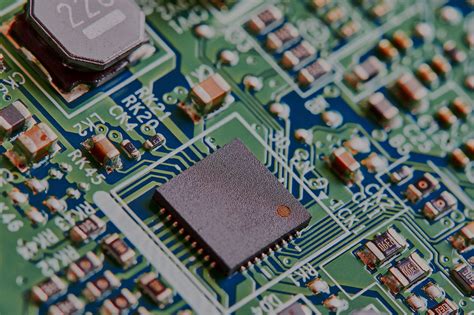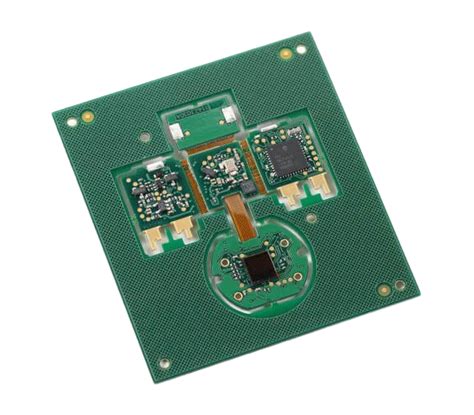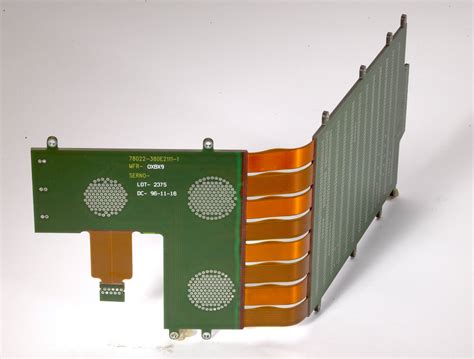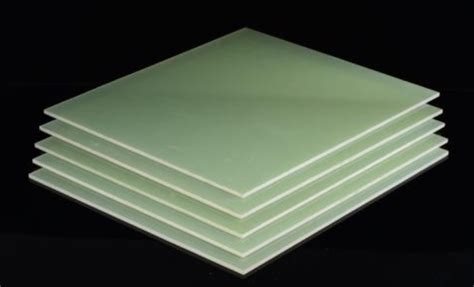What is the role of EDA technology in IC design?
(1) Circuit design: EDA technology can help designers quickly design circuit schematics and PCB layouts, improving design efficiency and accuracy.
(2) Circuit simulation: EDA technology can simulate and analyze circuits, verify circuit performance and reliability, and avoid problems in actual manufacturing.
(3) Circuit optimization: EDA technology can optimize circuits, improve circuit performance and reliability, and reduce costs and power consumption.
(4) Circuit testing: EDA technology can help designers test circuits, verify circuit performance and reliability, and ensure that circuits meet specification requirements.
EDA technology is the core of modern electronic design.
EDA technology can improve work efficiency, reduce design costs, and shorten product development cycles, which is very important for circuit designers and related companies.
EDA technology mainly involves the following aspects:
- Logic design: Use EDA design tools to complete logic design, synthesis, simulation and layout, as well as circuit design analysis.
- Circuit simulation: Circuit behavior simulation or performance simulation can be performed to verify the correctness and performance of the circuit, which can save design cycles and costs.
- Physical design: Physical design includes two stages: circuit layout and line routing. Physical layout mainly involves layout design and device layout; line routing is to map the logic netlist to the actual layout diagram.
- Static timing analysis: After the physical design is completed, static timing analysis is also required to ensure the timing correctness of the design.
- Standard library: Designers can use standard cell libraries to design circuits. Standard cell libraries include basic circuits such as NAND gates and NOT gates, which can easily complete gate-level design.
- Special device design: For different application scenarios, some special device designs are required, which requires superb circuit design technology and EDA technology support.
EDA technology has been widely used in various fields such as electronics, communications, computers, medical care, automobiles, and industry, involving circuit design, chip design, and system design, and has important practical significance and technical value.

Among them, EDA technology plays an important role in integrated circuit design, which can improve the accuracy and reliability of chip design and reduce the cost and cycle of testing and modification. In addition, due to the application of EDA technology, the manufacturing cost of integrated circuits is gradually decreasing, which plays an important role in improving the performance of electronic equipment and reducing prices. With the marketization of scientific research and technological development, it has become increasingly difficult to complete the design of complex electronic systems in a relatively short period of time using traditional electronic design methods. EDA (Electronic Design Automation) technology is an advanced, fast and effective electronic design automation tool that has emerged with the rapid development of integrated circuits and computer technology.
1 EDA technology
EDA (Electronic Circuit Design Automation) is an automated design process for electronic products that uses computers as working platforms, hardware description languages (VHDL) as design languages, programmable devices (CPLD/FPGA) as experimental carriers, ASIC/SOC chips as target devices, and necessary component modeling and system simulation. EDA is a revolution in the field of electronic design. It originates from computer-aided design, computer-aided manufacturing, computer-aided testing and computer-aided engineering. Using EDA tools, electronic designers design electronic systems from concepts, algorithms, and protocols. The entire process from circuit design, performance analysis to IC layout or PCB layout generation can be completed automatically on computers. EDA represents the latest development direction of electronic design technology today. Its basic characteristics are that designers use computers as tools to design and divide the entire system according to the top-down design method, complete the system behavior level design by hardware description language, and use advanced development tools to automatically complete logic compilation, simplification, segmentation, synthesis, optimization, layout and routing, simulation, and specific target chip adaptation compilation and programming download. This is called a high-level design method for digital logic circuits.
1.1 Introduction to EDA software
“EDA” is Electronic Design Automation, which is a software tool that can help people design electronic circuits or systems. This tool makes it possible to design more complex circuits and systems. At present, the EDA software that has entered my country and has a wide influence include: muhisim7, OW_AD, Protel, Viewlogio, Mentor, Synopsys, PCBW Id, Cadence, MicmSim, etc. These software have their own characteristics and are generally divided into several categories such as chip-level design tools, circuit board-level design tools, programmable logic device development tools and circuit simulation tools; among them, Protel is the most popular and widely used software for printed circuit board design in China. It is produced by Australian protd Technology Company. In the past, it was only used for schematic input and PCB layout design. Starting from Protel 98, analog digital mixed circuit simulation modules and programmable logic device design modules were added. In 1999, Protel launched Protel 99, a more powerful EDA integrated design environment, which integrates all EDA content into one and becomes a complete EDA software. Therefore, the software has great development potential, but its most distinctive and powerful functions are still schematic input and PCB layout design.

1.2 Main content of EDA technology
EDA technology covers a wide range of areas and is rich in content. From the perspective of teaching and practical application, the following four aspects should be mastered:
first, large-scale programmable logic devices;
second, hardware description language;
third, software development tools;
and fourth, experimental development systems.
Among them, large-scale programmable logic devices are the carriers of electronic system design using EDA technology, hardware description language is the main means of expression for electronic system design using EDA technology, software development tools are intelligent automatic design tools for electronic system design using EDA technology, and experimental development systems are download tools and hardware verification tools for electronic system design using EDA technology.

1.3 Main features of EDA technology
As the leading technology for modern electronic system design, EDA has several obvious features:
1.3.1 Designing hardware using software design methods
Hardware system conversion is automatically completed by relevant development software, and the design input can be schematic VHDL language. Through software design testing, the design of hardware circuits with specific functions is realized, and the hardware design modification work is as quick and convenient as modifying software programs. The entire design process involves almost no hardware, and the operability and product interchangeability are strong.
1.3.2 Chip-based design method
EDA design method is also called chip-based design method. It has a higher degree of integration and can realize on-chip system integration, carry out more complex circuit chip design and special integrated circuit design, making the product small in size, low in power consumption and high in reliability; it can be programmed in the system or on-site, making device programming, reconstruction and modification simple and convenient, and can realize online upgrade; it can perform various simulations, with a short development cycle, low design cost and high design flexibility.
1.3.3 High degree of automation
EDA technology automatically processes the entire process of electronic products from circuit function simulation, performance analysis, optimization design to result testing on the computer according to the design input file, and automatically generates the target system, so that designers do not have to learn a lot of in-depth professional knowledge, and can also avoid many derivation operations to obtain optimized design results. The design automation is high, which reduces the workload of designers and has high development efficiency.
1.3.4 Automatic product direct design
EDA technology automatically compiles, simplifies, synthesizes, simulates, optimizes, places, routes, adapts, and downloads programming to generate the target system based on the design input file (HDL or circuit schematic), that is, the entire process of electronic products from circuit function simulation, performance analysis, optimization design to result testing is automatically processed on the computer;
1.4 Key points of EDA technology
1.4.1 Programmable logic device-PLD
The development of digital logic devices directly reflects the transition from discrete components and small and medium-sized standard chips to programmable logic devices. ISP technology and HDPLD devices enable designers to easily develop dedicated integrated digital circuit chips ASIC in the laboratory. At present, many well-known manufacturers at home and abroad have developed a new generation of ISP devices and corresponding development software (such as Synario, EXPERT, Fundation, MAX Plus2, etc.).
1.4.2 “Top-down” design method
Ten years ago, the basic idea of electronic design was to choose standard integrated circuits to construct a new system “bottom-up”. This design method is like building a building brick by brick. It is not only inefficient, costly and error-prone. High-level design provides us with a new “top-down” design method. This method starts with the system, divides the functional block diagram and designs the structure at the top level, simulates and corrects at the block diagram level, and describes the high-level system with hardware description language. It is verified at the system level, and then uses comprehensive optimization tools to generate a specific gate circuit netlist. The corresponding physical implementation level can be a printed circuit board or a dedicated integrated circuit. Since the main simulation and debugging process of the design is completed at a high level, it is conducive to early discovery of structural design errors and avoids waste of design time. At the same time, it also reduces the workload of logic function simulation and improves the success rate of the design.
2 Digital circuit design
Since the 1990s, the development of electronic information products has shown two obvious characteristics: one is the deepening of product complexity; the other is the urgent time limit for product listing. With the improvement of computer cost performance and the emergence of programmable logic devices, the traditional digital electronic system design method has undergone a liberating revolution. The modern electronic system design method is that designers design chips to realize the functions of electronic systems, and put traditional firmware selection and circuit board design work into chip design. However, circuit design is essentially a single-level design based on gate-level description (mainly digital circuits). All design work (including design input, simulation and analysis, design modification, etc.) is carried out at the level of basic logic gates. Obviously, this design method cannot adapt to the new situation. For this reason, a high-level electronic design method, also known as a system design method, is introduced.
Digital circuit design itself is a comprehensive design.
Its design circuit generally contains different types of circuits. In the design process, there are inevitably many errors and deficiencies. If the circuit is directly installed and debugged on the circuit board according to this design circuit, the result is often time-consuming and laborious circuit debugging, and even causes problems such as damage to components and equipment, resulting in the design failing to achieve the expected effect.
Applying EDA technology to design digital circuits on the simulation software platform can help you become familiar with and master the most advanced circuit design methods and skills. In today’s rapid development of electronic technology, new devices and new circuits are constantly emerging, and design conditions are restricted by factors such as funding and generally cannot be updated in a timely manner.
By using software simulation methods, an electronic workbench with advanced test instruments and a full range of components can be virtualized on the computer, which can be used for targeted training in verification, testing, design and other experiments, and cultivate the ability to use computers and analyze, apply and innovate circuits. “Replacing reality with simulation” and “replacing hard with software” should become one of the trends in contemporary design development.
EDA covers all technologies in the entire process of electronic design, simulation, verification and manufacturing, such as: system design and simulation, circuit design and simulation, printed circuit board (PCB) design and verification, integrated circuit (IC) layout design, verification and testing, digital logic circuit design, analog circuit design, digital-analog hybrid design, embedded system design, hardware-software collaborative design, system-on-chip (SoC) design, programmable logic device (PLD) and programmable system-on-chip (SOPC) design, application-specific integrated circuit (ASIC) and application-specific standard product (ASSP) design technology. The widespread use of high-level hardware description languages and IP cores has fundamentally changed the way electronic design and the concept of electronic systems.
IP is the abbreviation of integrated circuit intellectual property module, which can be defined as “a circuit module that has been pre-designed, pre-verified, has relatively independent functions, and can be reused in SoC and complex ASIC”. According to its position in the design process, IP can be divided into three types: soft-core IP, solid-core IP and hard-core IP.
Soft-core IP is an RTL-level circuit function block described in a synthesizable hardware description language, and does not involve the use of circuits and circuit elements related to any process to implement these descriptions. The design cycle of soft-core IP is short and the design investment is small. Since it does not involve physical implementation, it leaves a lot of room for subsequent design; but at the same time, a certain proportion of subsequent processes cannot adapt to the soft-core IP design, resulting in a certain degree of soft-core IP correction, and there is a great deal of unpredictability in performance. In addition, soft-core IP needs to take considerable intellectual property protection risks when using it.
Hard-core IP is a netlist or physical-level layout that has been laid out, wired and optimized for a specific process library. Hard-core IP has been fully optimized in terms of power consumption, size, etc., and has good predictability, but its dependence on the process makes its flexibility and portability poor.
Solid-core IP is an IP core that has been synthesized and laid out based on a general process library, and is usually submitted to customers in the form of a netlist. Therefore, it has been optimized in terms of structure, area, and performance. Solid-core IP is a compromise between soft core and hard core.







